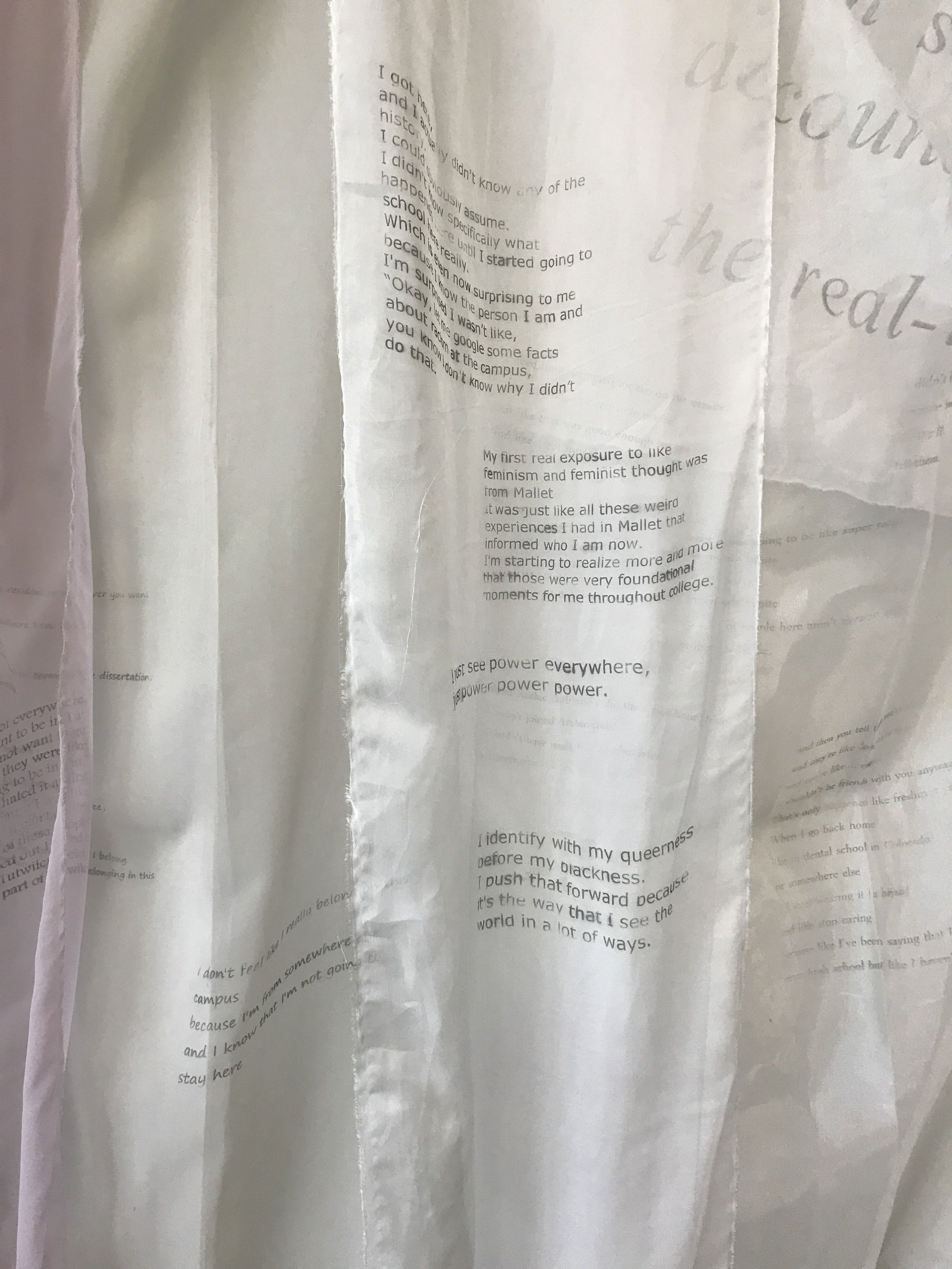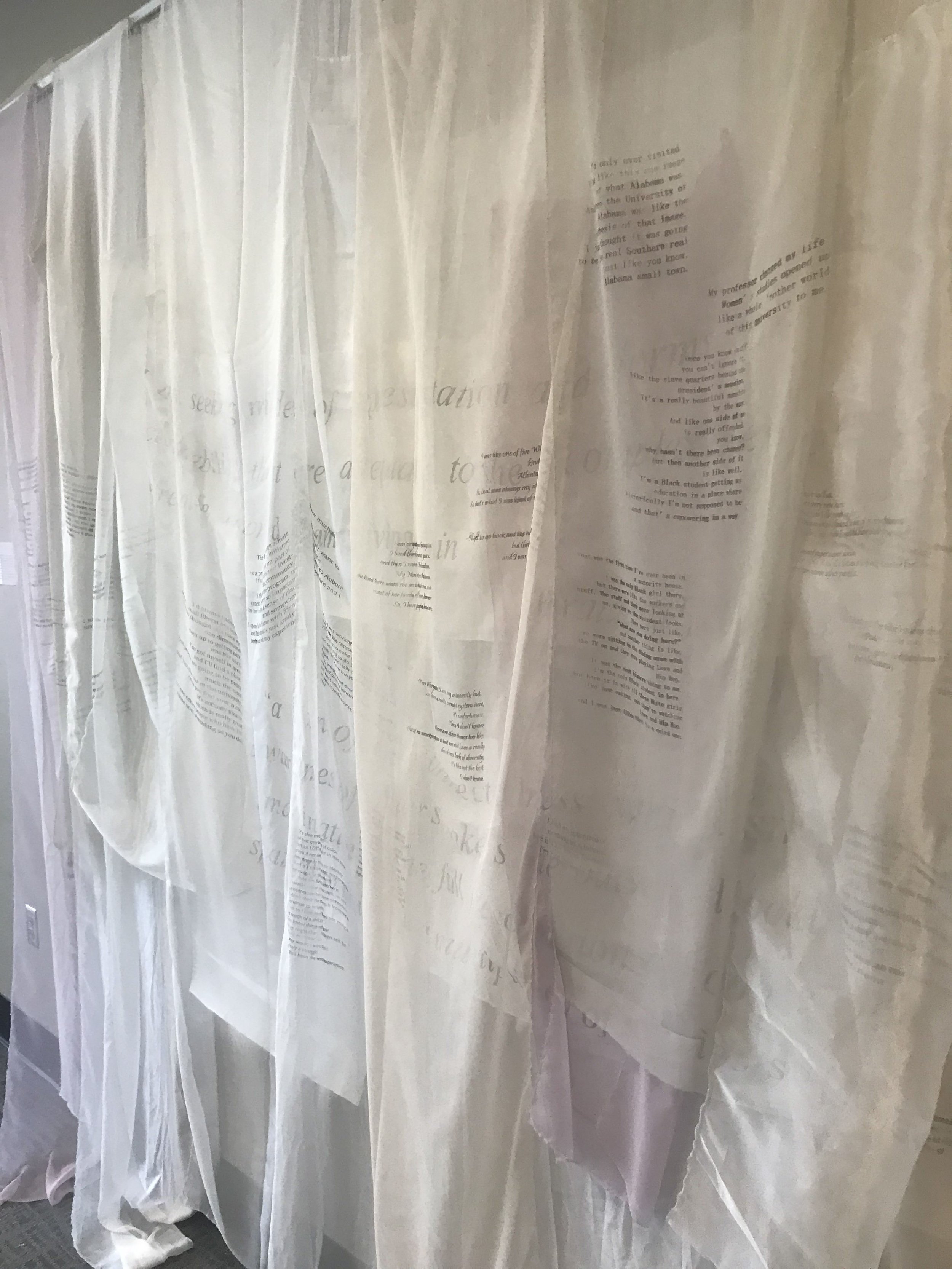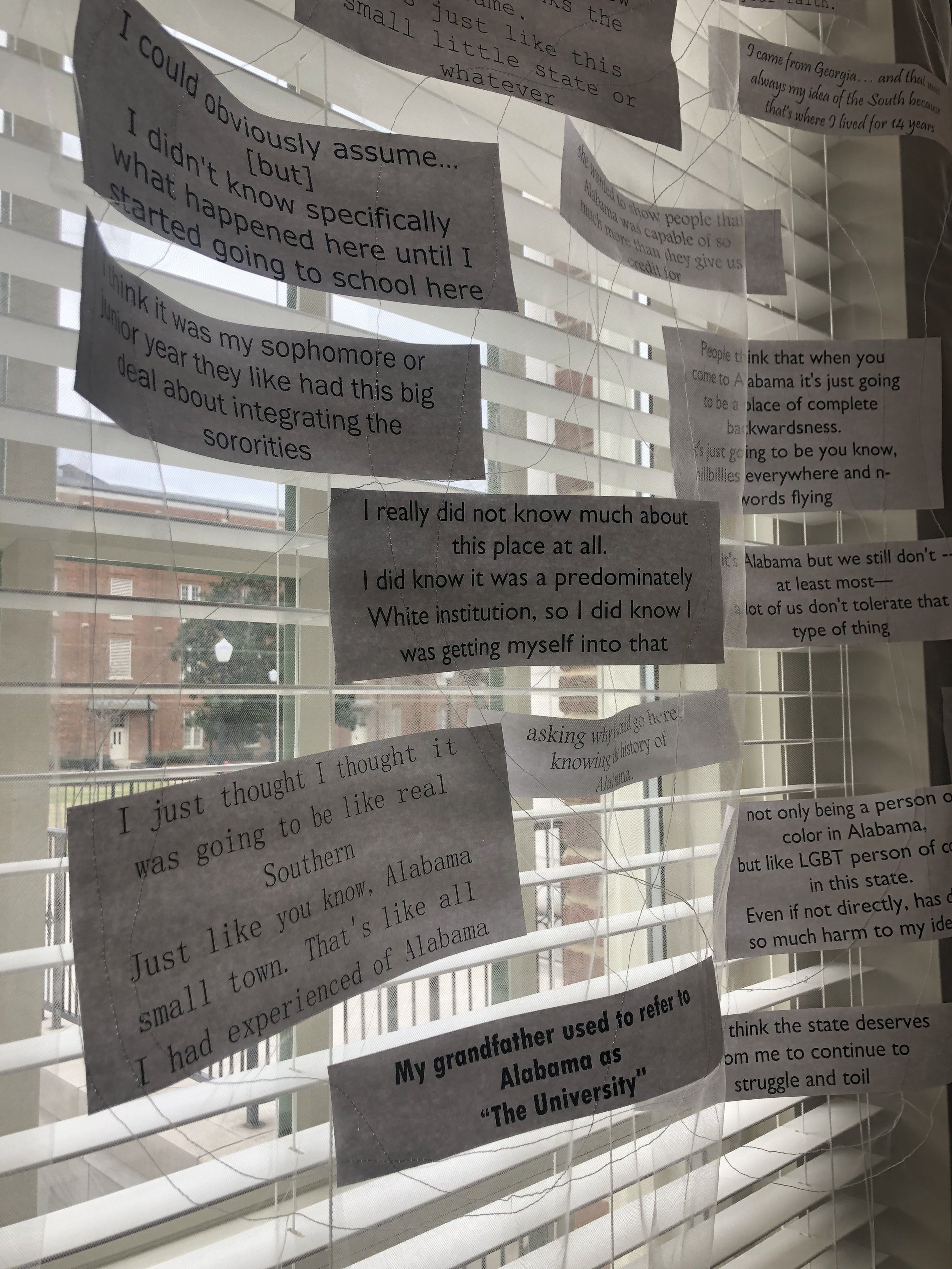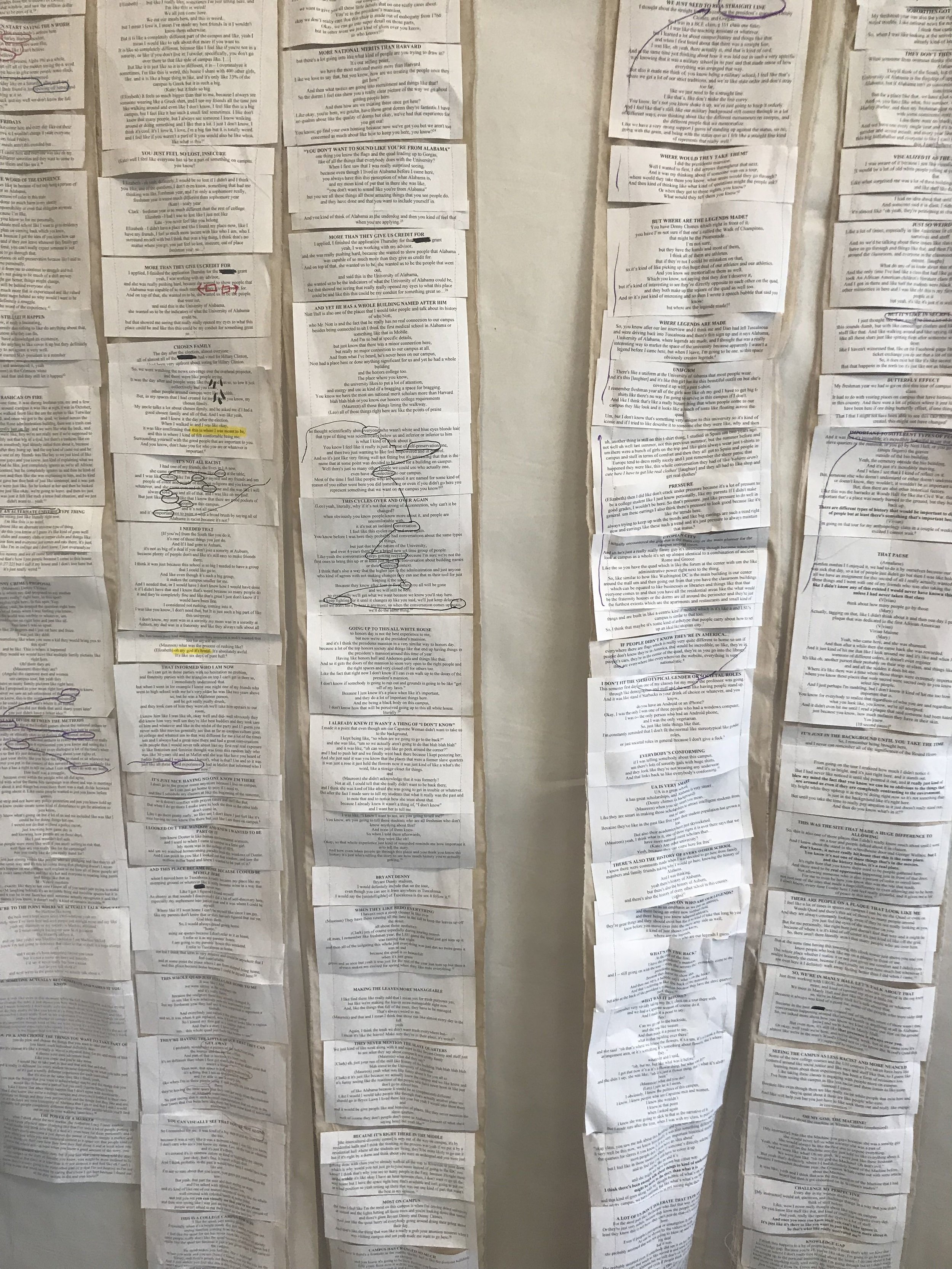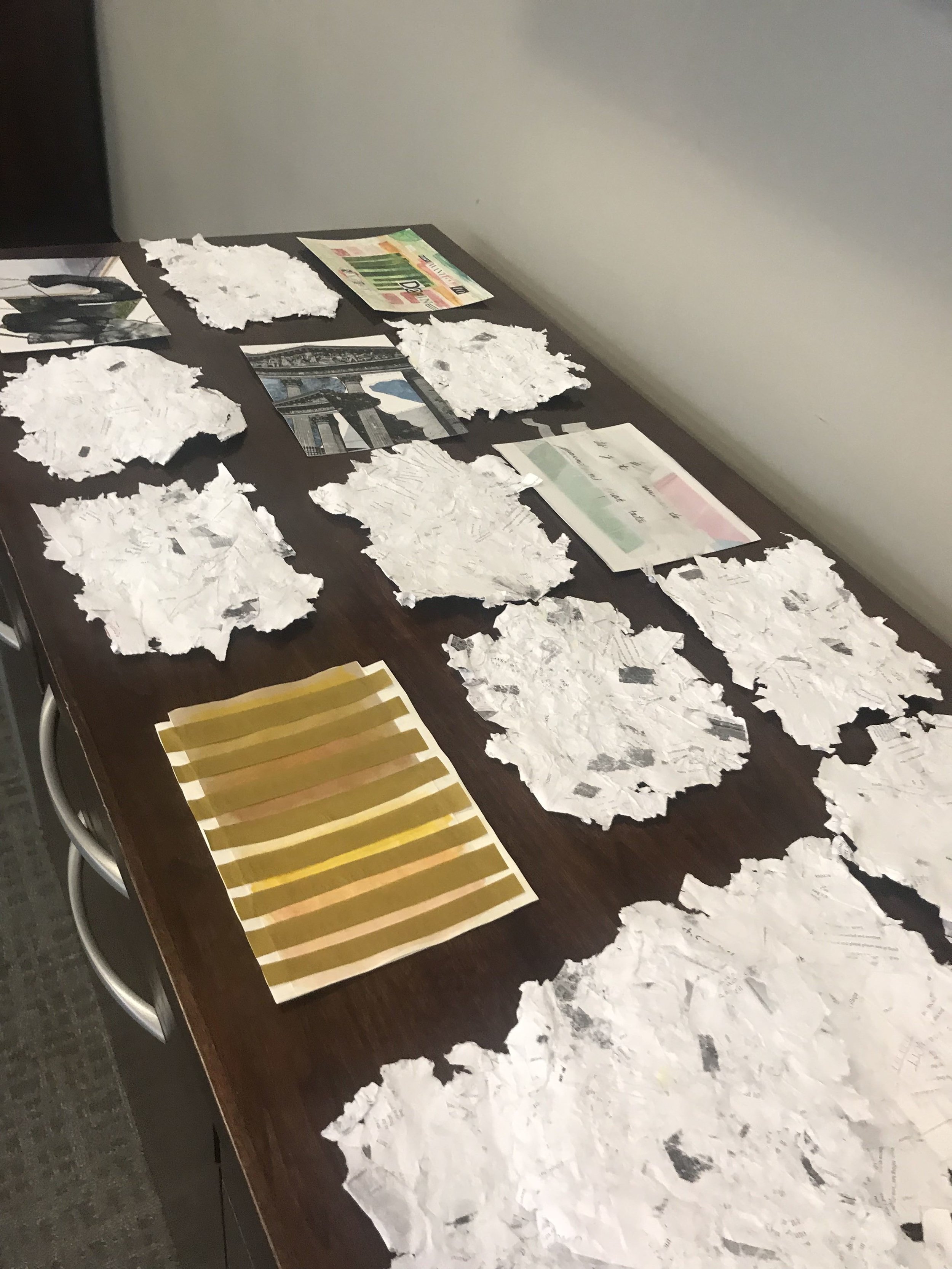Methodological Orientations: Dissertation Installation
March 7th, 2019
12PM - 2PM
2408 Ferguson Student Center
You are here, and you are part of it, even as you are making sense of it.
Building from research on race in higher education, my inquiry approaches the place of the campus as always-already racialized, as imbued with histories and stories and encounters of race and racism. I explore the complex and multiplicitous ways in which race and racism are produced in higher education through processes and the production of place, and how those processes influence belonging
Specifically, I consider how belongingness flows through the racializing assemblages of higher education, how belonging operates as both a feeling and a desire, and how belonging and race intra-act with the accountability systems and external measures of the university. Spatial and material theories move my exploration of belongingness from what belongingness is to what it does – how belongingness works and is produced. Following feminist philosophers Rosi Braidotti and Doreen Massey, then, this inquiry is attentive to the role of materials and nonhuman bodies and incorporates assumptions about the production of space and place as constantly under production through relations and intra-actions. Furthermore, my research project explored artful research practices to seek different forms of representation that through association, juxtaposition, and simultaneity “open thresholds to liminal spaces where a range of ideas and images, and their prosthetic associations are possible” (Garoian, 2013, p. 72).
My inquiry seeks to creates conversations between the experiences and navigations of students and the productions of place and space and race in higher education, moving between slippages in discourses between the South and Alabama, and how these discourses are disrupted and resisted and intervened in. This inquiry suggests possibilities for higher education practitioners to consider the specifics of place and the context of our coeval becomings to inform how we make the place of higher education differently.
This art installation plays with the data from my research, quotes and narratives of students, excerpts of theory and implications, to immerse you in the entanglements and contradictions the students mapped as they experienced the place of campus.
Asymmetrical starting locations
chiffon, muslin, and tulle, thread, text transfer
Braidotti (2006) advocated for mapping from the asymmetrical starting locations of embedded and embodied subjectivities-in-becoming, nomadic narratives that zigzag across time zones and spaces. The vertical fabric panels present poetic (re)presentations (e.g. Glesne, 1997; Görlich, 2016; Öhlen, 2003) created from the audio transcriptions of each of the thirteen students who took part in the study. The poetic narratives transferred on fabric are excerpts and fragments from interviews and focus groups, moments of belonging or recognition, of encounter. These poetic (re)presentations make possible a pause with each student who took part in this study, simultaneously serving as an introduction, an opening, and a summary.
Perceptions and slippages
tulle, paper, thread, audio of student narratives of perceptions of the South and Alabama
Barone (2008) urged for arts-informed research to engender “history-making dialogue or… conspiratorial conversations” through empathy, connections, altered perceptions and emotions, and disturbed equilibria (p. 39). During guided walks with students, I asked them to take me on an “alternative tour” of campus. As we walked, I asked students their initial perceptions of the University of Alabama, and how those perceptions changed once they arrived on campus. We discussed what they knew about the history of campus, and how they learned about it, and often this talk pulled us to monuments, landmarks, and buildings that for those students represent the history. Doreen Massey (2005) noted that spaces are never neutral, that they are always under production and being produced. In other words, Alabama is not a neutral place, but rather, exists in the imaginary of the nation in ways that produce the space of the campus in particular and specific ways. This piece maps the tensions and overlaps between how students perceived campus before arriving and their conceptions of the South, how the space of campus is produced in local and global intra-actions.
During the installation, an audio compilation of students discussing their perceptions of campus. Listen here.
Forgetting to forget
muslin, paper, thread, audio compilation of student’s experiences and encounters with race on campus
This piece pulls together narratives of disruption, intervention, reclamation, and resistance shared by students during interviews to explore the multiplicitous and simultaneous ways place is remade and reclaimed through joining up, linking in, telling other stories, drawing new lines. “Forgetting to forget,” is a political project of cartographic accuracy, mapping, recognizing, and empowering efforts of resistance through affirmative difference (Braidotti, 2011, p. 115). These moments consider the multiple and simultaneous ways these narratives disrupt and what their disruption (or reproduction) does. As Massey (2005) reminded us: “in understanding how our past continues in our present we understand also the demands of responsibility for the past we carry with us, the past in which our identities are formed” (p. 192). We might rather consider disruptions as moments of pause, encounters that made visible the workings and productions of place in particular ways.
During the installation, attendees were invited to mark and map between narratives and stories told by students while an audio compilation of students discussing their navigations on campus with the sociohistorical context of race played. You can listen to this audio compilation here.
Nomadic shifts
animation, audio, handmade paper, audio of walking
Movements to creatively reimagine how spaces can be otherwise are ethical nomadic shifts disidentifying from the logic of conventions (Braidotti, 2011). Throughout this project, I wondered and questioned my complicity and co-implicated-ness with the very structures I was trying to resist. Moments of silence and creaking chairs, moments when I should have intervened. These moments have left marks on this data, and as I have sought to stay “critically vigilant” of them, I have troubled and retraced and redrawn the lines and connections I have made through this dissertation (hooks, 2013, p. 149). To take up a nomadic ethics is also to take up a responsibility and accountability to our co-implicatedness, to exercise critical vigilance, to be accountable for the choices and cuts we make. To seek becoming, accountable to our embedded and embodied locations.






